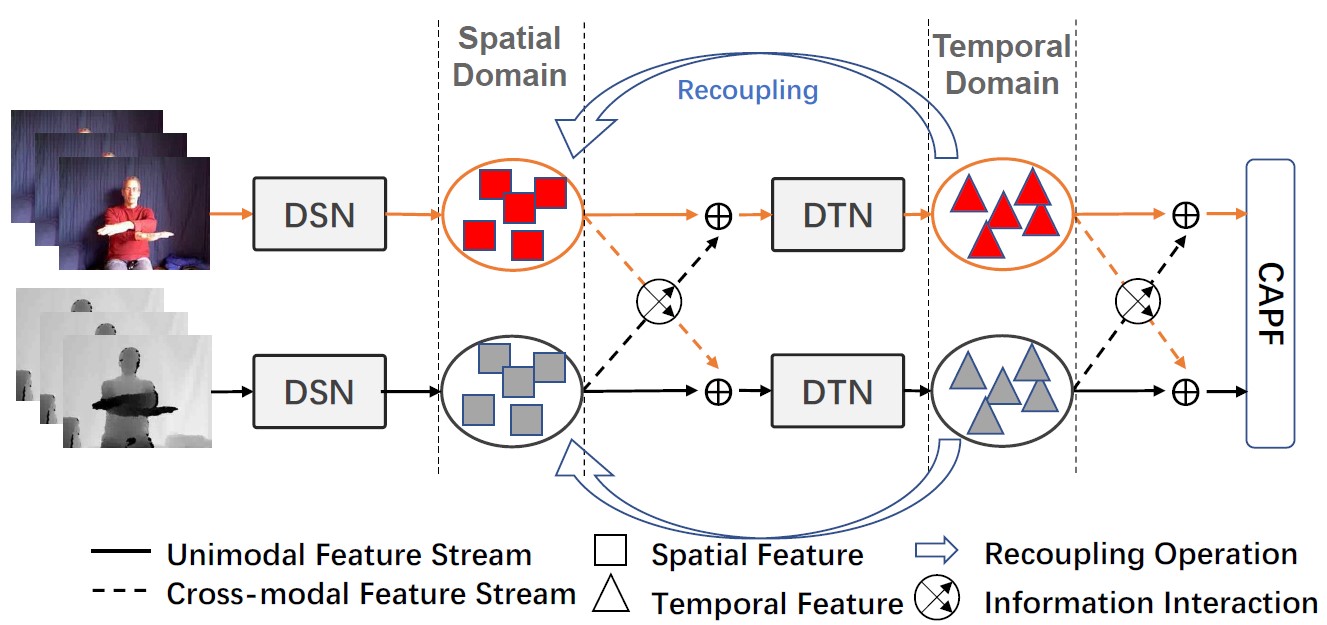Multi-stage Factorized Spatio-Temporal Representation for RGB-D Action and Gesture Recognition
RGB-D action and gesture recognition remain an interesting topic in human-centered scene understanding, primarily due to the multiple granularities and large variation in human motion. Although many RGB-D based action and gesture recognition approaches have demonstrated remarkable results by utilizing highly integrated spatio-temporal representations across multiple modalities (i.e., RGB and depth data), they still encounter several challenges. Firstly, vanilla 3D convolution makes it hard to capture fine-grained motion differences between local clips under different modalities. Secondly, the intricate nature of highly integrated spatio-temporal modeling can lead to optimization difficulties. Thirdly, duplicate and unnecessary information can add complexity and complicate entangled spatio-temporal modeling. To address the above issues, we propose an innovative heuristic architecture called Multi-stage Factorized Spatio-Temporal (MFST) for RGB-D action and gesture recognition. The proposed MFST model comprises a 3D Central Difference Convolution Stem (CDC-Stem) module and multiple factorized spatio-temporal stages. The CDC-Stem enriches fine-grained temporal perception, and the multiple hierarchical spatio-temporal stages construct dimension-independent higher-order semantic primitives. Specifically, the CDC-Stem module captures bottom-level spatio-temporal features and passes them successively to the following spatio-temporal factored stages to capture the hierarchical spatial and temporal features through the Multi- Scale Convolution and Transformer (MSC-Trans) hybrid block and Weight-shared Multi-Scale Transformer (WMS-Trans) block. The seamless integration of these innovative designs results in a robust spatio-temporal representation that outperforms state-of-the-art approaches on RGB-D action and gesture recognition datasets.
PDF Abstract

